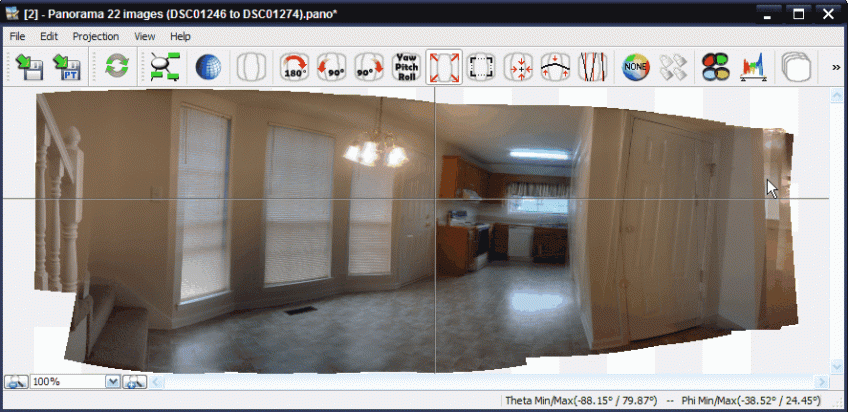The most common report requested is the Fannie Mae 1004. This requires details regarding the subject, of course, but also regarding marketing conditions and specifically the neighborhood.
Marketing conditions and neighborhood data can be difficult to determine and up to individual opinions. For which appraisers always have.
Let’s first look at the form:


The first section under Neighborhood Characteristics is asking if the location of the subject’s neighborhood is Urban, Suburban or Rural. The acceptable guidelines for making this determination can be found at Fannie Mae Single Family Property Guidelines. To summarize: “An “urban” location relates to a city, a “suburban” location relates to the area adjacent to a city, and a “rural” location relates to the country or anything beyond the suburban area.” They are not refusing to lend money on specific types of neighborhoods. But if you choose urban or suburban as the neighborhood location, it will be much harder to explain why you had to extend the search more than one mile from the subject or more than six months from time of sale to obtain comparables.
Next, how Built-Up (the degree of development of a neighborhood) is the area. >75 is checked if there is little vacant land. <25 is chosen if the subject’s neighborhood is mostly vacant property. The Fannie Mae Single Family Property Guidelines states “The degree of development of an area may indicate whether a particular property is residential in nature. When underwriting a mortgage secured by a property located in a rural or relatively undeveloped area, the lender should focus on the characteristics of the property, zoning, and the present land use to determine whether the property should be considered residential in nature.” The same information applies to Growth.

Under the heading One Unit indicate the price range and predominant price of properties in the subject neighborhood. The natural inclination would be to use the local Multiple Listing Service and see what comparables exist within the subject’s neighborhood. But this part of the grid actually needs to know the range of all homes found within the neighborhood. LOW under PRICE will indicates the lowest priced home which could be occupied, not one in need of repair or only attractive to investors willing to renovate. HIGH is the highest priced home in the area and be extremely high in comparison to the subject. Predominate is usually a range such as 95-115 referring to $95,000 – $115,000. It is tempting to ensure your subject’s value is within the Predominate’s range which may not be accurate. But the subject’s value should be between the low and high range unless the subject is not in any condition to be occupied.
Age may read NEW in areas where there has been new construction. And if the area was recently rural but builders have now converted pasture land to garden-home communities the LOW could be NEW and the HIGH 100+. Under AGE new construction would read as NEW. Predominate may or may not be the age of the subject and it is usually a range. Sometimes two ranges. Take the example of new construction: Predominate may read as NEW-5, 50-75 indicating there is new construction and there is also established areas.
Fannie Mae Single Family Guidelines indicate: “The price range must reflect high and low prevailing prices for residential properties that are comparable to the property being appraised (one-family properties, two-family to four-family properties, condominium units, or cooperative units) and, in some cases, for competing properties (one-family properties when the property being appraised is a two-family to four-family property or a condominium unit, or condominium units when the property being appraised is a cooperative unit). Isolated high and low extremes should be excluded from the range, which means that the predominant price will be that which is the most common or most frequently found in the neighborhood. The appraiser may state the predominant price as a single figure or as a range (if that is more appropriate).
When the subject property has a sales price (or value) that exceeds the upper price range, the property is considered as an “over-improvement” for the neighborhood. The property is considered as an “under-improvement” if its sales price (or value) is less than the lower price range. If the subject property is an over-improvement, the mortgage terms generally should be more conservative because the property may not be acceptable to typical purchasers. The appraiser must explain why the property is an over-improvement or under-improvement and comment on the adjustments that were made in the “sales comparison analysis” adjustment grid to reflect that condition.
The lender should consider whether a property in an urban area is among those being renovated. Since demand for this type of property can be strong, the property should not be regarded as over-improved if there is a strong market interest, which is indicated by the existence of comparable properties.”
The Multiple Listing Service will not be very useful when it comes to determining percentages for Land Use. Using the county map book will give you much information in this regard by noting major highways and streets. The Fannie Mae Single Family Guidelines also have advice: “Our appraisal report forms provide an area for the appraiser to report the relative percentages of the developed land in the neighborhood when discussing the present land use, rather than simply referring to the zoning classifications. The appraiser should report separately the percentage of developed one-family sites, developed two-family to four-family sites, etc. Undeveloped land should be reported as vacant. In addition, if there is a significant amount of vacant or undeveloped land in the neighborhood, the appraiser should include comments to that effect to ensure that he or she adequately describes the neighborhood. If the present land use in the neighborhood is not one of those listed on the appraisal report form—such as parkland—the appraiser also must indicate the type of land use and its related percentage. The total of the types of land uses must equal 100 percent.
Typically, dwellings best maintain their value when they are situated in neighborhoods that consist of other similar dwellings. However, some factors that are typical of a mixed-use neighborhood—such as easy access to employment centers and a high level of community activity—can actually enhance the market value of the property through increased buyer demand. Urban neighborhoods also frequently reflect a blend of residential and non-residential land uses—including residential multifamily properties, other properties that are used to provide commercial services (such as groceries and other neighborhood stores) in support of the local neighborhood, industrial properties, etc.
When different land uses and property types are present in a neighborhood, that fact should be considered a neighborhood characteristic that the appraiser needs to take into consideration when performing the neighborhood analysis and defining the neighborhood boundaries. To ensure that any positive or negative effects of the mixed land uses are reflected in the sales comparison analysis, the appraiser should select comparable sales from within the same neighborhood whenever possible. If this is not possible, the appraiser may need to make “neighborhood” or “location” adjustments to the “sales comparison analysis” grid for any sales that are not subject to this same neighborhood characteristic.”















